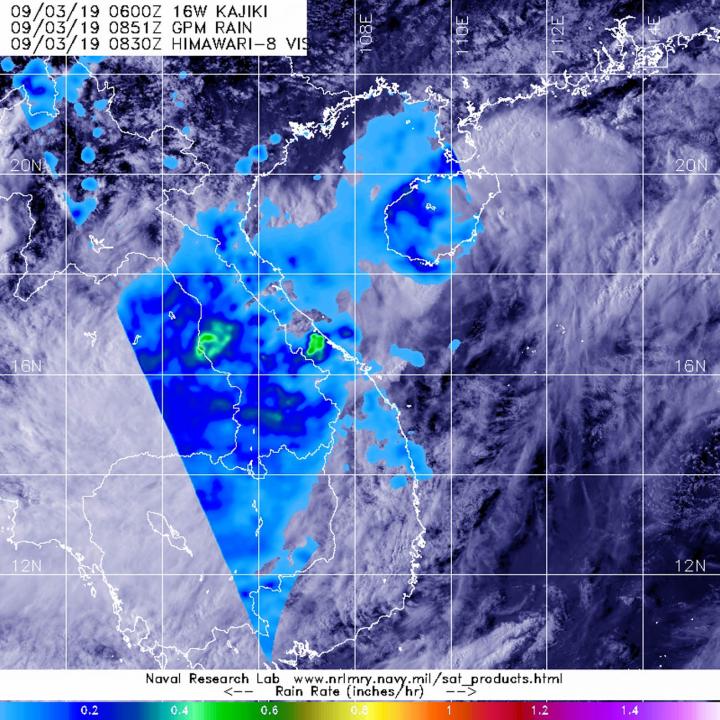The Global Precipitation Measurement mission or GPM core satellite provided a look at rainfall rates in Tropical Depression Kajiki after it made a quick landfall in Vietnam.
On Sept. 2, Kajiki formed as Tropical Depression 16W in the South China Sea close to the Vietnam coast. It briefly strengthened to a tropical storm and was renamed Kajiki before weakening back to depression status.
The GPM satellite passed over the South China Sea and analyzed the rain rates throughout the storm on Sept. 3 at 4:51 a.m. EDT (0851 UTC). GPM found the heaviest rainfall in areas over central Vietnam and Laos, where it was falling at a rate of 20 mm (about 0.8 inch) per hour. Lighter rainfall rates around those areas was between 0.2 and 0.4 inches (5 and 10 mm) per hour. Light rain was also falling over Hainan Island, China. GPM is a joint mission between NASA and the Japan Aerospace Exploration Agency, JAXA. NASA researches tropical cyclones and provides data to international partners to use in their forecasting.
At 11 a.m. EDT (1500 UTC), Tropical Depression Kajiki had maximum sustained winds near 30 knots (34.5 mph/55.5 kph). It was centered near 16.3 degrees north latitude and 107.4 degrees east longitude, about 55 nautical miles west-northwest of Da Nang, Vietnam.
The Joint Typhoon Warning Center noted that Kajiki made landfall into Vietnam, but will move back out over water. The system is forecast to dissipate within a day or so.
###
By Rob Gutro
NASA’s Goddard Space Flight Center
This part of information is sourced from https://www.eurekalert.org/pub_releases/2019-09/nsfc-gat090319.php
Rob Gutro
[email protected]
http://www.nasa.gov/goddard


